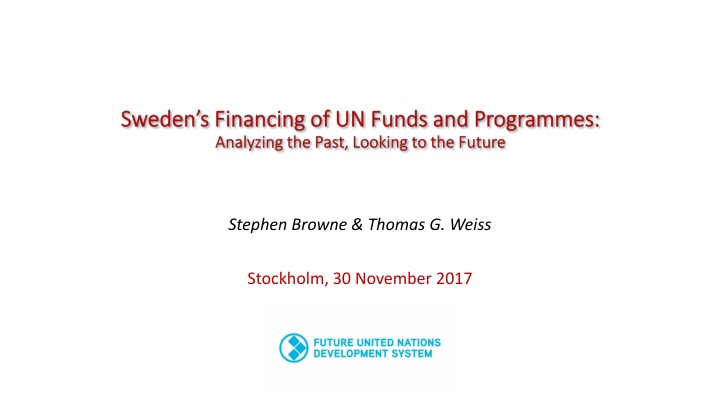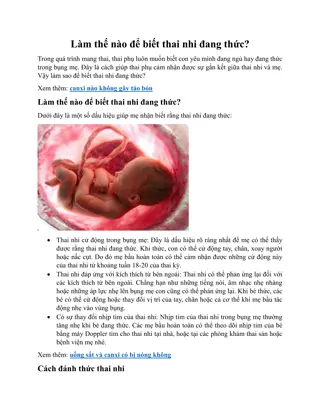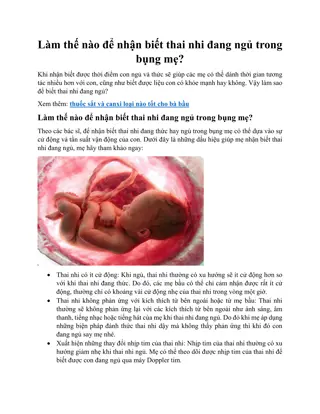Challenges and Opportunities in the UN Development System
The UN Development System faces challenges such as unbalanced resource allocations and inconsistent funding data due to the lack of a strategic plan. Despite high expectations from the 2015-2030 agenda, there is a need for a more cohesive system to address countries in chronic conflict. The system also struggles with dispersed independent organizations and a decline in ODA funding.
Download Presentation

Please find below an Image/Link to download the presentation.
The content on the website is provided AS IS for your information and personal use only. It may not be sold, licensed, or shared on other websites without obtaining consent from the author.If you encounter any issues during the download, it is possible that the publisher has removed the file from their server.
You are allowed to download the files provided on this website for personal or commercial use, subject to the condition that they are used lawfully. All files are the property of their respective owners.
The content on the website is provided AS IS for your information and personal use only. It may not be sold, licensed, or shared on other websites without obtaining consent from the author.
E N D
Presentation Transcript
Stephen Browne & Thomas G. Weiss Stockholm, 30 November 2017
UN Funds & Programmes: Chronology UN Funds & Programmes: Chronology ITU 1865/1945 UPU 1874/1945 ITC 1964 UNESCWA 1973 UNCTAD 1964 UNFPA 1969 ILO 1919/1945 WFP 1963 FAO 1945 UNEP 1972 UNECA 1958 ICAO 1945 HABITAT 1978 UNESCO 1945 UNESCAP 1949 Specialized agencies UNAIDS 1996 WB/IMF 1946 Special Fund 1959 UNECLAC 1948 UNODC 1997 WHO 1948 GATT 1948 UNDP 1965 UN UNICEF 1946 EPTA 1950 Women 2010 UNECE 1947 WMO 1951 IAEA 1957 IMO 1958 UNHCR 1950 WIPO 1970 IFAD 1977 UNIDO 1985 UNWTO 2003
The UN Development System General Assembly Security Council Economic and Social Council WORLD BANK GROUP Specialized Agencies Regional Commissions Funds and Programmes UN Secretariat ILO FAO UNESCO WHO UNIDO IFAD UNWTO ICAO IMO ITU UPU WMO WIPO IAEA UNDP (UNCDF) UNICEF WFP UNFPA UNCTAD ITC UNEP UN-HABITAT UNAIDS UN-DESA UNODC UN Women UN ECA UN ECE UN ECLAC UN ESCAP UN ESCWA UNOPS UN functional commissions UN training and research organizations UNHCR UNRWA Regional and country field system (1,000+ offices) Many regional locations; between 5 and 20 separate UN offices per country
Organizational Challenges of UN (Development) Organizational Challenges of UN (Development) Multilateralism Multilateralism Expansion by adding new organizations, but with No overall strategic plan or guidance, leading to Unbalanced core resource allocations but also Inconsistent and inaccurate funding data Dispersed system of independent organizations which are Patronized by individual member-states leading to A: For donors as principals, rapid increases in non-core funding, accompanied by Excessive concentration on quick results, burdensome reporting, but B: For programme countries as principals, no objective assessment of organizational performance and relevance and No commitment to value-for-money
Development Context Development Context UN a declining ODA force facing further funding cuts, yet High expectations because of 2015-2030 agenda which, however Does not mention human rights (Myanmar, Sri Lanka ) Graduation of many programme countries to middle-income status, but Several countries suffering chronic conflict and fragility, which demand A more joined up UN system which doesn t exist
Reform Context Reform Context Ten years of limited action DaO blueprint (2006) not fully implemented UN system too compartmentalized Problem of the firewall No strong UNDS head Member-states resistant to change
Main Challenges of UN Funding Main Challenges of UN Funding Decrease in core, increase in non-core resources Inaccurate and ambiguous funding data
UN Funds & Programmes UN Funds & Programmes: Core/Non-core
Types of Funding Source (Simplified) Types of Funding Source (Simplified) Number of Contributors Overheads Coverage Eligible Programme Reporting Evaluation (Programming Agenda) Countries Assessed Full membership - Entire organizational mandate (agreed corporate strategy) Unrestricted Annual report of organization Standard Core funding (Least Earmarked) Voluntary Core Individual donors - Entire organizational mandate (agreed corporate strategy) Unrestricted Annual report of organization (normally) Standard Soft Voluntary Individual donors 5-8% Part of organizational mandate Countries selected by UN Individual reports for donors Standard or customized Non-core Collective report to donors Countries selected by UN Clusters of donors (pooling) 7-8% Part of organizational mandate Agreed with donors (collective) Non-core funding Hard Voluntary Individual donors 5-8% Donor-interest priority Countries selected by donors Individual reports customized Standard (donor-determined) or Non-core donor-driven by donor Restricted Voluntary Non-core Individual programme countries 5%+ Perceived national interests and ownership Contributor s country Jointly determined by organization and donor Jointly determined (Most Earmarked)
Challenges of UN Funding: UNDP Today Challenges of UN Funding: UNDP Today Voluntary core 13% Soft voluntary non-core 5% Restricted voluntary non-core 20% Soft voluntary non-core (pooling) 5% Hard voluntary non-core 57%
Advantages of Core: Development Advantages of Core: Development Supports organizations in their strategic planning, research, advocacy, norms Provides flexibility when needs change Facilitates forward planning Provides leverage, including to attract private sector funding for innovation Jump-starts activities and provides seed money Can reimburse funds advanced for unforeseen purchases Reduces transaction costs: direct (time/energy of limited staff) and indirect (competition, waste, salaries of locals, etc.) Addresses unpopular or silent or long-running crises Subsidizes experiments that carry risk Supports prevention, which is harder to sell
Advantages of Core: Humanitarian Advantages of Core: Humanitarian Fills gaps when appeals fall short Improves emergency responses Helps leverage earmarked funding Tides over the period emergency to development gap
Challenges of UN Non Challenges of UN Non- -core Funding: Development Development Bilateralization: diversion and dilution of core mandates Transformation of UN organizations from donors to implementers Competition for funds healthy competition (?), but further atomization of the system: follow the money not mandate Emphasis on short-term results, not longer-term change Emphasis on narrow technical rather than broad developmental concerns Donor driven = not aligned to programme country priorities Diversion of staff resources: excessive time for donor wooing, reporting Declining commitment to core mandates, especially norms, standards Subsidization by core of non-core Declining overhead charges (race to bottom) core Funding:
Challenges of UN Non Challenges of UN Non- -core Funding: Humanitarian Humanitarian core Funding: Unbalanced allocations of funding, more rigidity Underfunding of longer-term crises Underfunding of permanent infrastructure: staff, offices etc Underfunding of reserves for new crises
Mitigating Factors Mitigating Factors In general, more earmarking = less management control However, more control can be achieved by managements through: A strong, coherent corporate strategy Clear results orientation Unified programme budgeting (core plus non-core) Use of thematic trust funds Pooling of donors, joint programming (MPTF model) Narrower, more focused development mandate Willingness to refuse funding offers, request higher overheads
Solutions? Solutions? Appoint a strategic head of UNDS Pool all development and humanitarian funding Make UNDP the sole UNDS coordinator Realign all organization mandates to eliminate duplication Ensure all programmes are joint Fully incorporate human rights into development/humanitarian
Nine Nine Recommendations (Do Recommendations (Do- -able able) ) Sweden should: Sponsor a new Independent International Commission on UN Funding (IICUNF) Press for clearer, more uniform definitions and nomenclature for the various UN funding categories Request that all UN organizations to improve their messaging around the importance of core funding Prioritize its non-core support to UN funds and programmes which, in its judgment, are the most effective in articulating clear and credible corporate strategies Lead discussions on more predictable financing of essential normative activities Press for standard ways of measuring and justifying overhead costs Increase its contributions to pooled and core funding for humanitarian relief Withdraw its non-core funding from UNDP encouraging it to emphasize its original central funding and coordination role within the UNDS rather than its role as an operational competitor within the system Consider withdrawing funding from its favored enclaves in individual UN organizations





















